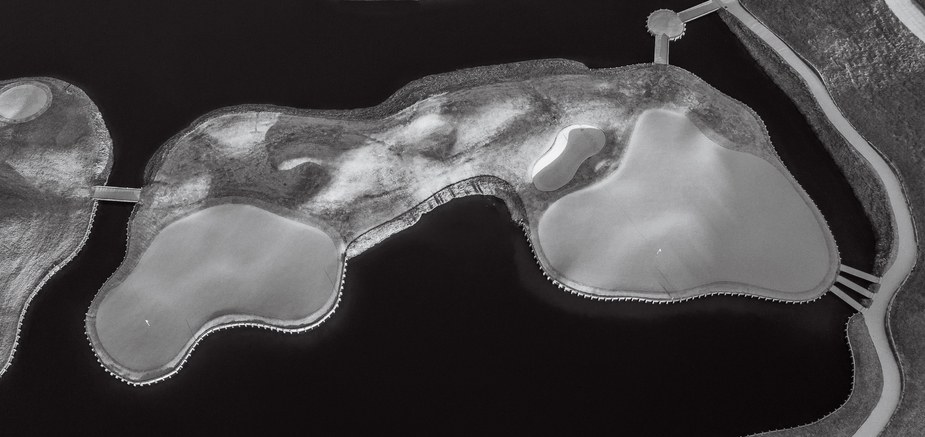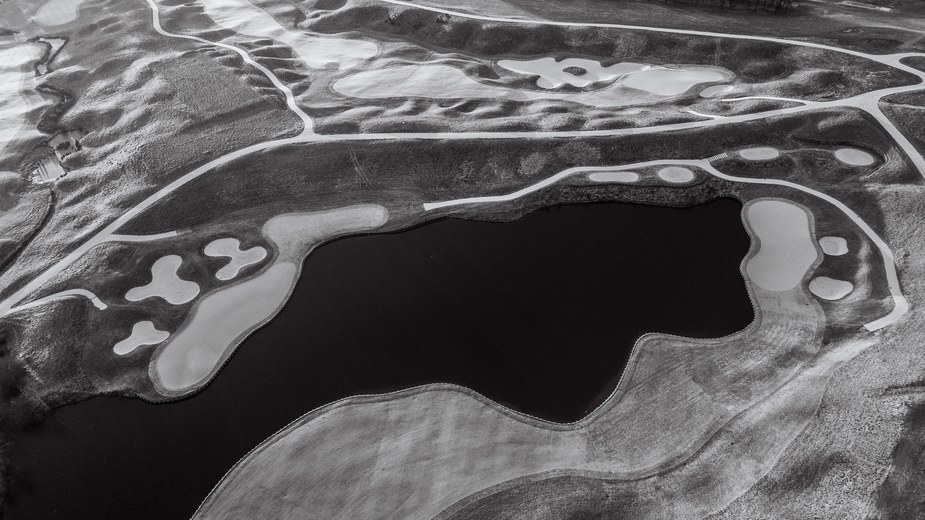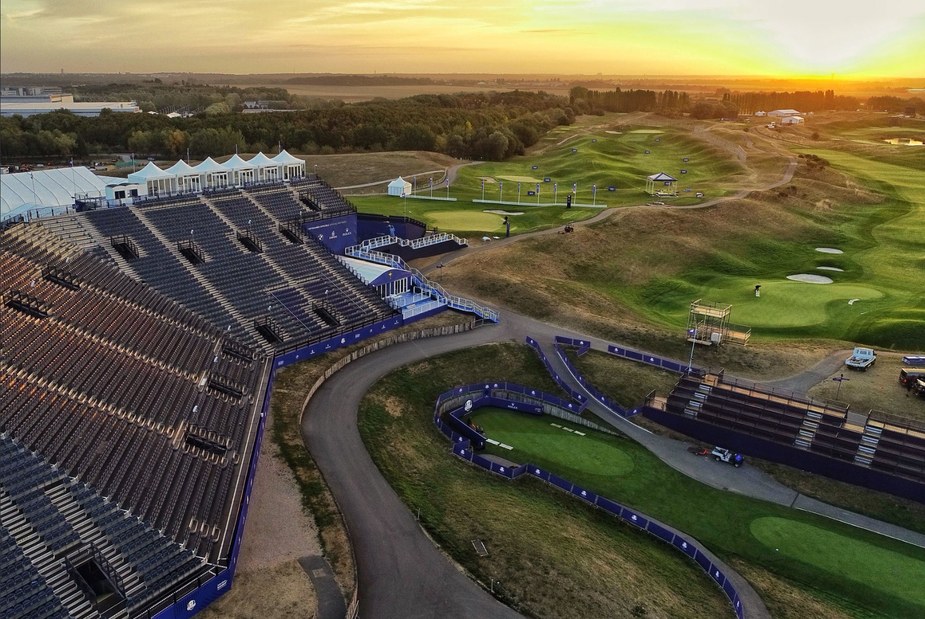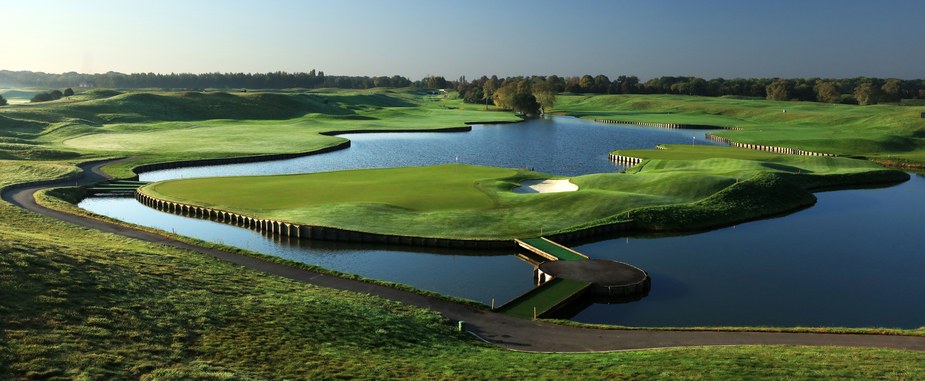An unusual disorder seems to overcome tour professionals who have played the Albatros course at Le Golf National, site of this week’s 42nd Ryder Cup in France. Call it temporary amnesia, for the lack of a more clinical diagnosis.
When discussing the Hubert Chesneau/Robert von Hagge design in general terms, the early reviews are typically complimentary. The consensus among players is that you don’t have to be long off the tee to score. And though the need for solid shotmaking to manoeuvre around the numerous lakes, humps and bumps is real, in several spots the course affords the chance to make amends for mistakes.
“It’s a great test of golf,” Justin Thomas said when he got his first glimpse in July while playing the French Open. “It’s not like there are any hidden tricks or anything like that.”
However… grab the pros after they’ve walked off the course, and they mention what they seem to have forgotten: the place plays harder than it looks, particularly the four claustrophobic closing holes locals refer to as The Loop of Doom.
“It’s a golf course that can really beat you up if you’re not on your guard,” says Thomas Levet, one of three Frenchmen, with Jean Van de Velde and Victor Dubuisson, to have competed in the Ryder Cup. “You don’t necessarily think about it like that. It’s a bit crafty that way, almost diabolical.”
Consider the devilish end to July’s French Open. A par 4 on the 18th would have given Julian Suri the win, but the American’s approach found the water guarding the green and led to a double-bogey. England’s Chris Wood also dropped shots on the 15th and 17th, and Jon Rahm didn’t even last that long, making a triple-bogey 7 on the 12th hole. Alex Noren finished more than half an hour ahead of the final pairing and played the last four holes in two-under to win.
Still, if the Albatros Ailment holds, all will be forgotten come this Friday, the adrenaline of the biennial competition fuelling both teams. For the Americans, the goal is to win away from the United States, something that hasn’t happened since 1993. The Europeans are trying to keep from losing two straight matches for the first time in that 25-year span.
This is just the second time the Ryder Cup will be played in continental Europe, the other coming in 1997 at Valderrama in Spain. Le Golf National offers numerous risk-reward opportunities, presenting options that should make it an intriguing matchplay venue. Combined with the location – 30 kilometres south-west of central Paris and eight kilometres from historic Versailles – and the not-so-small fact that several players occupying both rosters seem to have their games in peak form, there’s the potential for a dramatic three days outside the City of Lights.
To get you fully prepared, here are nine things to know about the Ryder Cup venue.
1.) IT’S NOT A NEW COURSE
The Albatros opened on October 5, 1990; the inaugural foursome featured Major champions Greg Norman, Jeff Sluman and Raymond Floyd joining French professional Marc Farry. It was the culmination of a nearly decade-long endeavour by Claude-Roger Cartier, the president of the French Golf Federation and a quiet, behind-the-scenes presence in the rise of the European Tour.
Cartier’s idea was to create a permanent home for the French Open – the oldest national Open in continental Europe, played since 1906 – and establish a performance centre for France’s national teams in hopes of increasing the profile of golf within the country. To carry it out, he found roughly 140 hectares of state-owned land in the Paris suburb of Saint-Quentin-en-Yvelines and negotiated a 99-year lease with the government.

The masterplan included 45 holes – Le Golf National has a second 18-hole course, the Aigle (French for eagle), and the nine-hole Oiselet (birdie) – and a teaching academy for golfers of all levels. Of course, it was not an entirely philanthropic mission – the property includes a 131-room resort.
One interesting wrinkle in Le Golf National’s creation: because the property had been used for agriculture purposes, it was decidedly flat. Cartier, who died in 2014 at age 93, worked with local authorities to have soil excavated from building projects in Paris and transported out of the city. An estimated 1.6 million cubic metres of dirt was trucked in and used to shape the courses.
Since its opening, Le Golf National has hosted the national Open every year except 1999 and 2001; notable winners include Colin Montgomerie, Retief Goosen, Graeme McDowell (twice), Martin Kaymer and Tommy Fleetwood.
2.) IT’S ALSO A “NEW” COURSE
After the European Tour awarded it the Ryder Cup in May 2011, the French Golf Federation made good on its promise to upgrade the Albatros. According to Paul Armitage, general manager of Le Golf National, nearly €8 million was spent on course renovations, mostly done in 2014 and 2015.
Chief among the changes was lengthening several holes, including the three par 5s. The course is listed at 7,234 yards (6,615 metres) for the Ryder Cup with a par of 71. Other notable updates:
• Creation of a lake, intended as part of the original design, in front of the par-3 11th hole, replacing marshland that had dried up.
• Redesigned greens on the first and 16th holes to allow for more pin positions.
• Enhanced drainage to meet the requirement that the course can open within three hours after any significant rain. That’s an attempt to prevent a repeat of the Monday finish at Celtic Manor in Wales in 2010.
• Reconstruction of all bunkers to include concrete bases.
• Cosmetic alterations were also made throughout the surrounds of the course. Fescue was added on several holes, and wood railroad ties were installed around several lakes. “The greens were sort of falling into the water previously,” Armitage says.

Traditionalists might baulk, saying the changes have made the course a bit more “Americanised”. Armitage insists the essential character of the original design remains.
“It’s now not quite so rough around the edges,” says Levet, who won the French Open at Le Golf National in 2011 (one of six European Tour wins, the most of any French golfer) and celebrated by jumping into the water beside the 18th green – only to break his leg.
3.) THE COURSE IS BUILT TO HOLD A PARTY
Land around several of the closing holes was reshaped to make for better – and bigger – areas to build corporate hospitality chalets in anticipation of 60,000 fans and volunteers each day.
Those eager to watch the start of any match will appreciate the massive grandstand surrounding the first tee. The largest of its kind in Ryder Cup history, its capacity is 6,500, compared to 2,148 seats at Gleneagles in 2014 and 1,668 at Hazeltine National in 2016. Many of the seats also offer a view of the 18th green.

To make sure this party is seen worldwide, fibre-optic cables were laid around the course, all feeding into the three separate TV compounds in use during the matches: one for NBC/Golf Channel in the United States, one for Sky Sports in the United Kingdom, and a separate world feed.
4.) THE COURSE HASN’T GOTTEN HARDER AFTER THE RENOVATION
At least if you’re using the French Open’s winning score as a barometer. Noren’s seven-under 277 in July was the first time since the bulk of the renovation was completed in 2015 that the champ didn’t shoot double-digits under par. The average winning score the past four years has been 10.75-under par; the average winning score in the 13 years before was 10.6-under par.
5.) THE COURSE WON’T FAVOUR ONE TEAM OVER ANOTHER (WINK! WINK!)
The not-so-well-kept secret of the Ryder Cup is the influence the home captains have in course setups, the assumption being that they’ll cater conditions to benefit their 12-man side. In 2016, the visiting Europeans howled about how wide open Hazeltine National played and the easy hole locations that set up a birdie-fest.
In charge this time, the Europeans would seemingly desire thicker rough and narrow landing areas off the tee to counter the Americans’ perceived length advantage off the tee. European Ryder Cup captain Thomas Bjorn insists that he does not envision seeking many changes compared to how the course played in July.
“It’s not a big driver’s golf course, but we know that,” Bjorn says. “It’s not like you’re going to hit 14 drivers. There are going to be a lot of irons. That’s the way the golf course has always been.”

Perhaps, although the wispy fescue was plenty thick and the fairways narrower than some observers remembered from years past. And by some observers, we’ll include McDowell, one of Bjorn’s vice captains. “We always like to set it up a little tighter and a little tougher and maybe not having the greens quite as fast,” McDowell says. “Does it favour our guys more than theirs? We think it does.”
We won’t call Bjorn a liar, but we will call the Europeans’ bluff. Don’t be surprised if the rough is rougher and the fairways thinner when American captain Jim Furyk arrives with his boys.
6.) WATER WILL PLAY A FACTOR
Ten of the Albatros’ 18 holes have water at least partially in play, including six on the back nine. The greens on the 15th, 16th and 18th holes all have water guarding the approach shots. This could become particularly interesting in foursomes matches, when players who tee off on the odd holes will face the daunting second shot into 18 having potentially hit their last approach shot on the 12th hole.

7.) THE COURSE ROUTING ISN’T CHANGING FOR THE RYDER CUP
A trend at team matchplay events – Harding Park and Robert Trent Jones Golf Club for Presidents Cups, and Hazeltine National for the 2016 Ryder Cup – has been to reconfigure the routing so traditional closing holes will see action regardless of whether matches end early. But what players encounter each year at the French Open will be the same for the Ryder Cup.
8.) THE COURSE WILL GET MORE INTERNATIONAL ATTENTION
When the Olympics come to Paris in 2024, Le Golf National will be the site of the men’s and women’s golf competitions.
‘It’s not like you’re going to hit 14 drivers. There are going to be a lot of irons. That’s the way the golf course has always been.’
9.) THE FRENCH ARE BEHIND THE EVENT (CONTRARY TO SOME REPORTS)
Mike Lorenzo-Vera, a 33-year-old European Tour pro, surprised some with his outspoken comments this year about Ryder Cup preparations in his home country. He told The New York Times there is little excitement locally for the event and that golf’s negative reputation in France was undermining the matches.
Not surprisingly, event organisers disputed that. European Tour chief executive Keith Pelley stated that through June, French fans have purchased 43 percent of the 51,000 daily Ryder Cup tickets sold. That, he said, surpasses the 37 percent of the daily tickets sold to Scottish fans in 2014 at Gleneagles.
“The support we have had from everyone in France, the government, the French Golf Federation and the fans has been superb, and these numbers bear that out,” Pelley said.
The French Golf Federation reports that the event has already boosted interest in the game domestically. As a condition of hosting the event, the federation committed to building 100 short-course training facilities throughout the country. Nearly all are completed, and the federation says 30,000 new golfers have taken up the game, significant for a country with roughly 410,000 registered golfers.
“We believe the event can have a lasting impact on golf in France no matter what happens that week,” Armitage says.
Of course, golf fans everywhere are longing to see something special take place this week.




